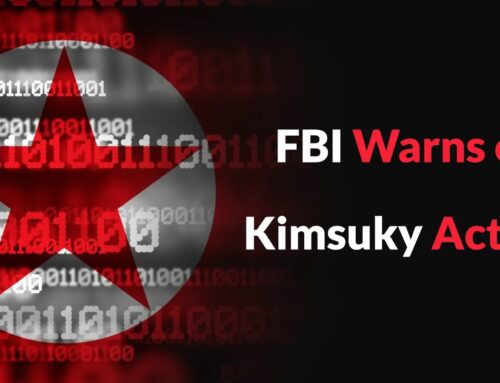
Microsoft Urges OEM Manufacturers to Fix Windows 11 USB-C Notification issues
Imagine plugging in a critical peripheral, confident in your system’s ability to alert you to any issues, only to find yourself troubleshooting a seemingly healthy device. This silent failure is precisely the frustration many Windows 11 users are experiencing due to a widespread issue with USB-C notification functionality. Microsoft has now directly appealed to its OEM partners, urging them to rectify configuration problems preventing these vital alerts from firing correctly.
The Critical Role of USB-C Notifications in Windows 11
USB-C, with its versatile capabilities for data transfer, video output, and power delivery, has become a cornerstone of modern computing. To enhance the user experience and prevent hardware damage or data loss, Windows 11 incorporates built-in troubleshooting notifications specifically for USB-C connections. These alerts are designed to proactively inform users about potential issues such as:
- Slow Charging: Notifying when a connected device is charging slower than expected, potentially due to an incompatible charger or cable.
- Faulty Connections: Highlighting issues with the physical connection, such as a damaged port or cable, that could lead to intermittent connectivity.
- Peripheral Malfunctions: Indicating when a USB-C peripheral is not functioning optimally or is drawing excessive power.
The absence of these notifications can lead to prolonged troubleshooting, reduced productivity, and even hardware degradation. Users might unknowingly continue to use misconfigured setups, potentially shortening the lifespan of batteries or other components.
Microsoft’s Call to Action: OEM Configuration Issues
The core of the problem lies not in Windows 11’s inherent design, but in how Original Equipment Manufacturers (OEMs) are configuring their systems. Microsoft’s recent plea underscores that many devices are shipped with settings that inadvertently disable or impair these crucial USB-C troubleshooting alerts. This isn’t a vulnerability in the traditional sense, like an exploit that allows unauthorized access, but rather a configuration flaw that directly impacts user experience and device reliability. It reflects a gap in the handoff between operating system capabilities and hardware implementation.
While this issue does not have a specific CVE assigned directly to it, as it’s a configuration oversight rather than a code defect or security vulnerability, its impact is undeniable. The nearest parallel in the CVE database might be found in categories relating to “Improper Handling of Exceptional Conditions” if the system fails to report an error, or “Usability” issues, though this is not tracked under a specific CVE number like CVE-2023-XXXX (hypothetical example as no specific CVE found).
Impact on Users and IT Professionals
For the average Windows 11 user, the lack of these notifications translates directly into frustration and wasted time. They may assume a new charger is faulty, or a device is broken, when the issue is merely a miscommunication or an underpowered port. For IT professionals and system administrators, this creates an un
necessary support burden. Diagnosing issues that should be self-evident through system notifications becomes a manual, often time-consuming, process involving trial and error with different cables, ports, and external diagnostics.
Remediation Actions for OEMs and Users
While Microsoft’s call is primarily directed at OEMs to implement correct configurations in future hardware shipments and possibly through firmware/driver updates, there are steps users and IT departments can take to mitigate the impact:
- For OEMs:
- Review and Update Firmware: OEMs must audit their current firmware and driver packages to ensure that the USB-C controller configurations are correctly enabling Windows 11’s notification system.
- Software Updates: Push updates through Windows Update or proprietary OEM update tools to existing devices to rectify the misconfigurations.
- Standardized Testing: Implement stricter quality assurance protocols to verify USB-C notification functionality before devices ship.
- For Users/IT Professionals:
- Check for OEM Driver Updates: Regularly check your device manufacturer’s support website for updated USB-C drivers or firmware. These updates often resolve connectivity and power delivery issues.
- Windows Update: Ensure your Windows 11 installation is fully updated. While the core issue is OEM-driven, Windows updates may contain patches that enhance USB-C handling in general.
- Manual Troubleshooting: When encountering USB-C issues, systematically try different cables, ports, and power sources. If available, test the peripheral on another system to isolate the problem.
- Device Manager Inspection: In Device Manager, check the “Universal Serial Bus controllers” and “USB connectors” sections for any warning signs like yellow exclamation marks, which indicate driver or hardware issues.
Looking Ahead: Enhancing User Experience Through Collaboration
This situation underscores the critical synergy required between operating system developers like Microsoft and hardware manufacturers. For the Windows 11 ecosystem to deliver on its promise of a seamless and intuitive user experience, OEMs must actively collaborate to ensure that the hardware fully supports and leverages the OS’s built-in functionalities. As USB-C continues to be the dominant connectivity standard, reliable notification systems are not just a convenience, but a necessity for maintaining device health and user productivity.





